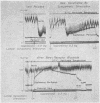Abstract
The lateral saphenous vein of dogs was perfused at constant flow with autologous arterial blood, and perfusion and femoral vein pressures were monitored; changes in the difference between these pressures were due to changes in venomotor activity. Injection of isoproterenol into the perfusate caused the vein to dilate. The amount of dilatation depended on smooth muscle tension in the wall of the vein before injection. When this was minimal (after sympathectomy), isoproterenol had no effect. During venoconstriction produced by electrical stimulation of the lumbar sympathetic chain or by the infusion of venoconstrictor drugs, the dilating action of 0.1 mg of isoproterenol was measured. Expressed as a percentage of the initial constriction caused by sympathetic stimulation, 5-hydroxytryptamine, or 1 M potassium chloride, the extent of the dilatation was 86.7±4.3 (SE of mean), 79.7±4.2, and 87.7±3.2, respectively. With norepinephrine and epinephrine infusions, the isoproterenol dilatations were less (65.1±9.0 and 55.2±7.2, respectively), consistent with the stimulant action of these agents on both alpha and beta receptors; such action was confirmed by comparing the responses to nerve stimulation and infusions of norepinephrine and epinephrine before and after betareceptor blockade. The venoconstriction caused by sympathetic stimulation and by infusions of norepinephrine and epinephrine was greatly enhanced by cooling the vein (decreasing perfusate temperature), but the dilating action of isoproterenol appeared to be insensitive to changes in temperature. The data suggest that beta receptors are specific entities and, when maximally stimulated, are capable of causing a venous relaxation that is proportional to the initial degree of tension in the vein wall.
Full text
PDF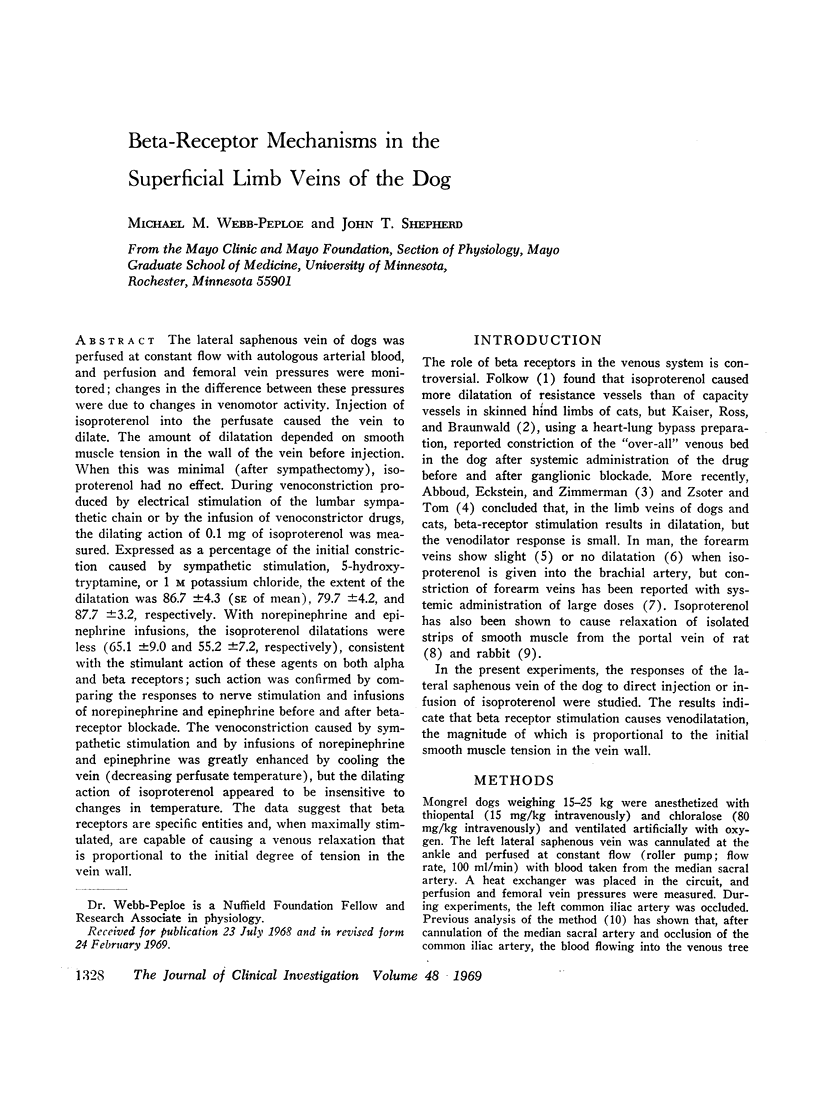
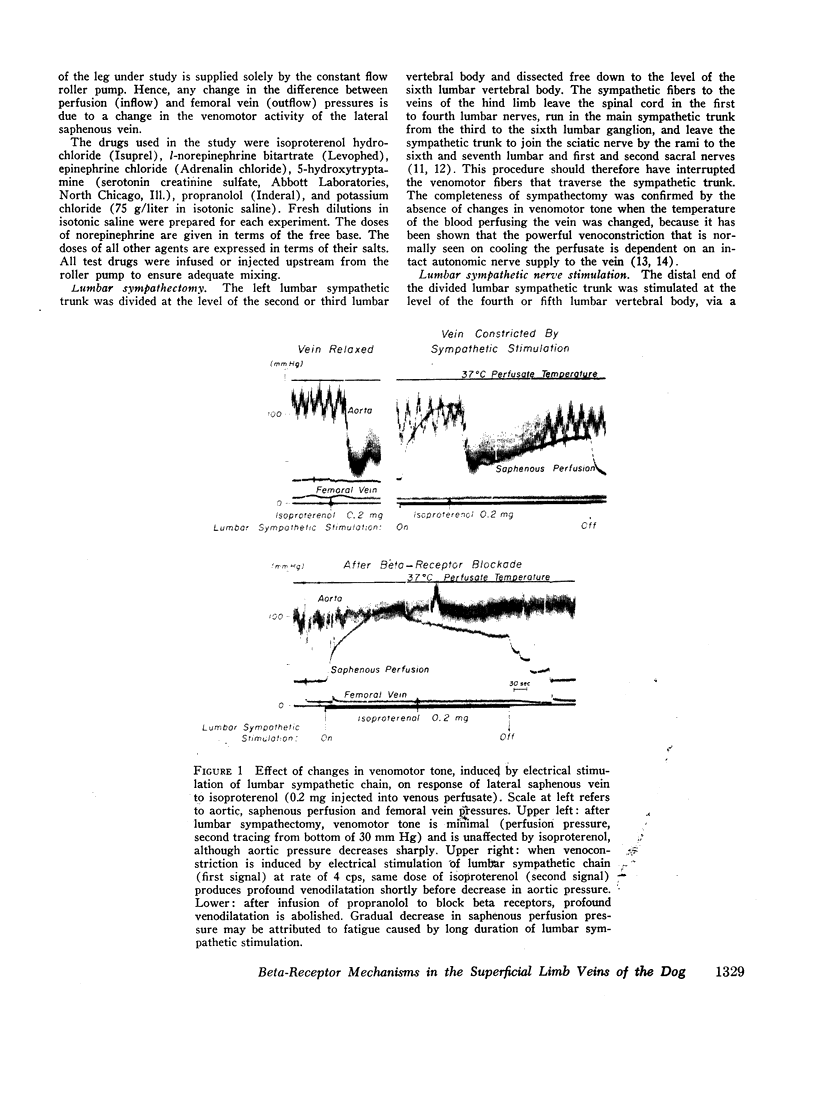
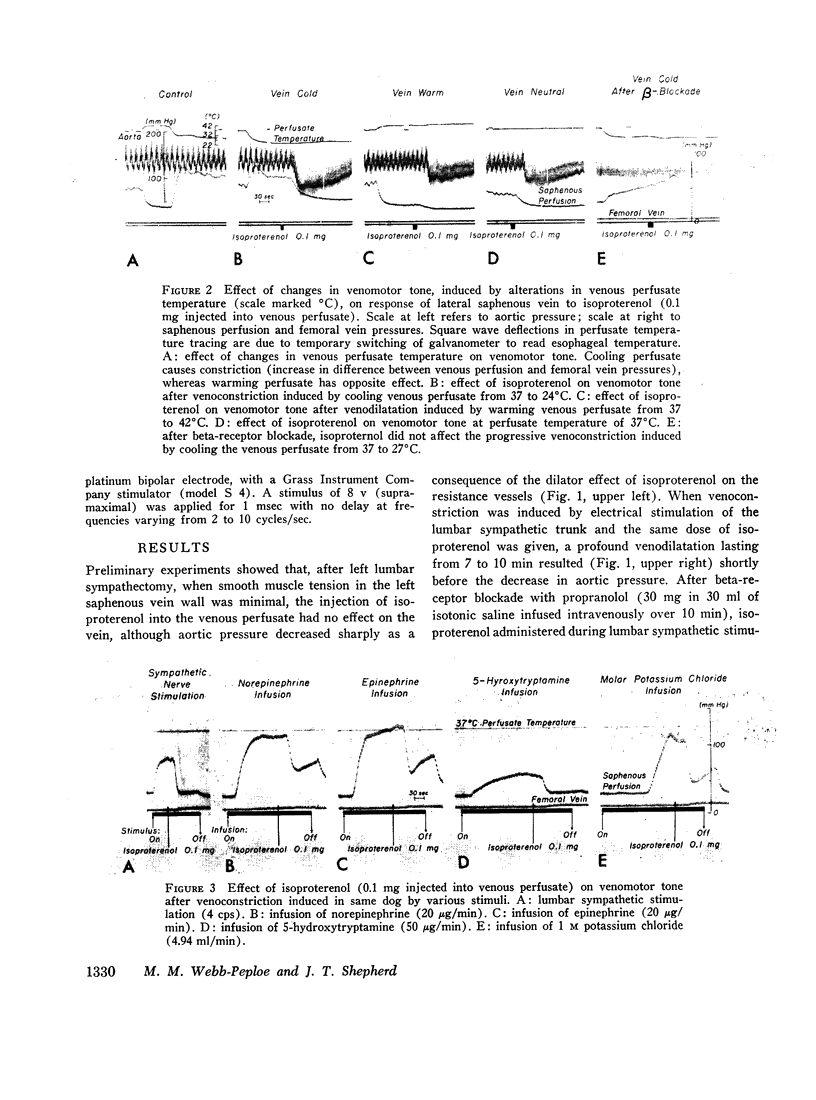
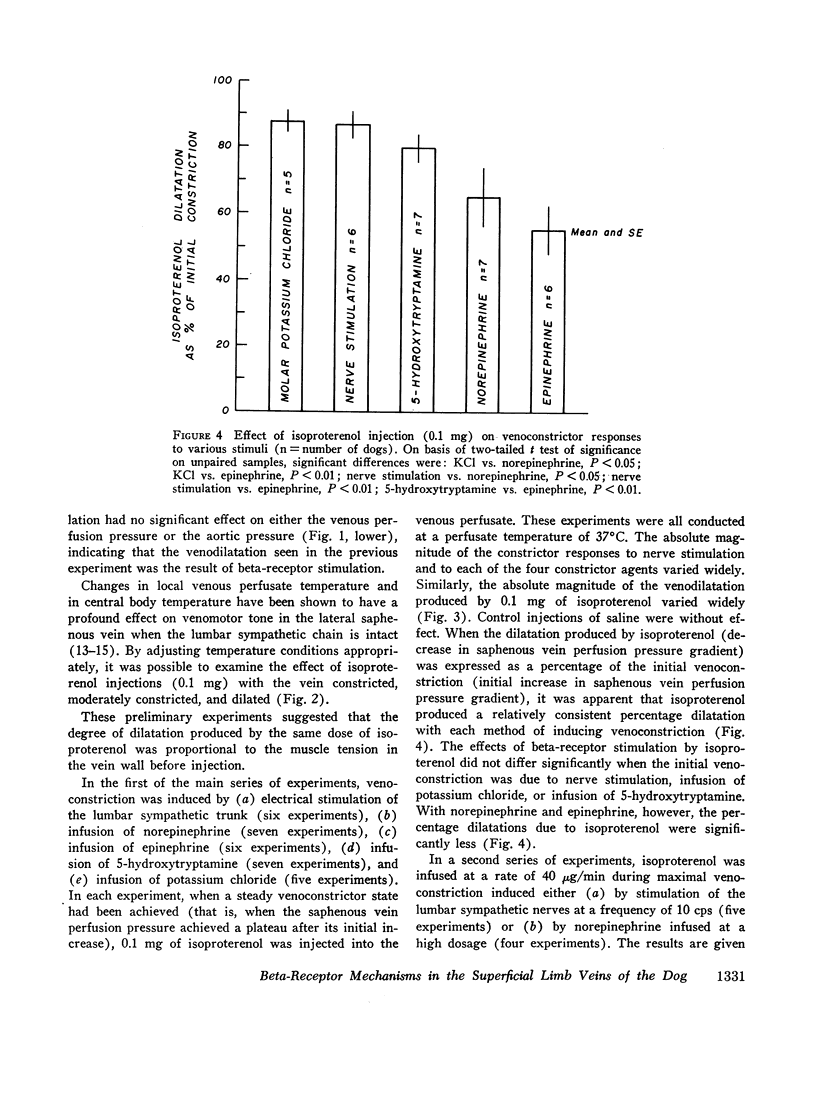
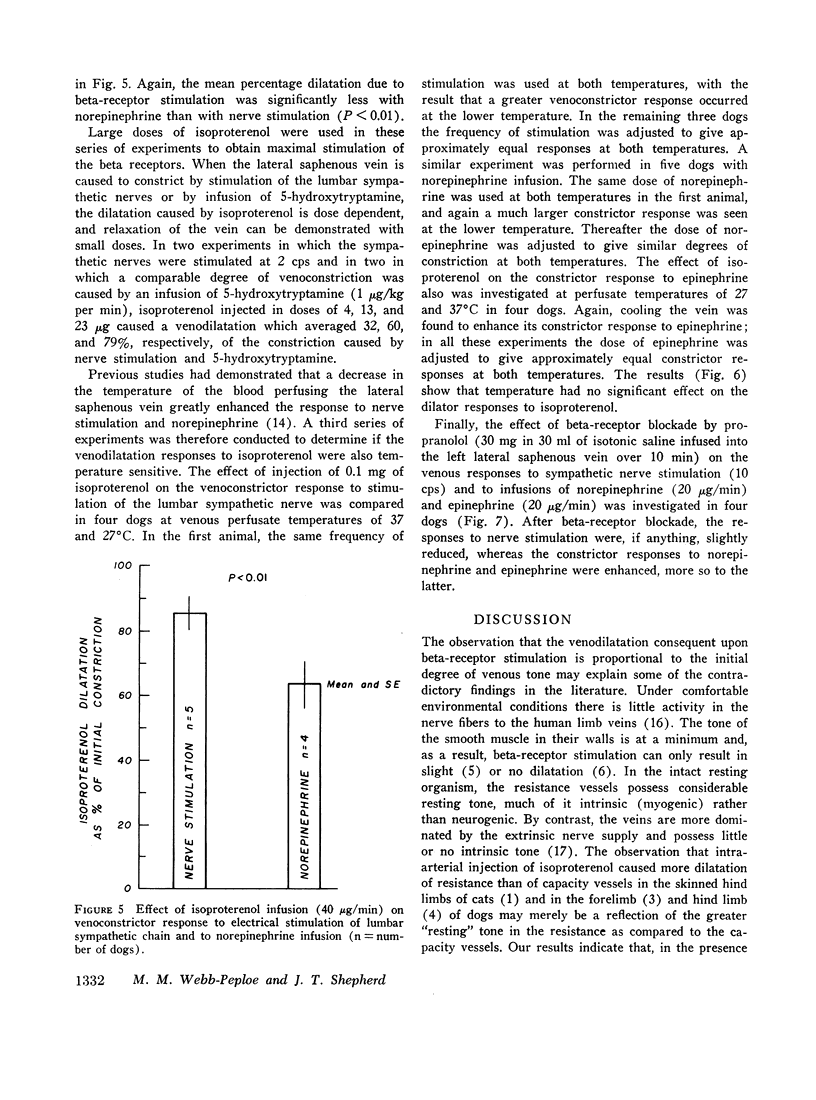
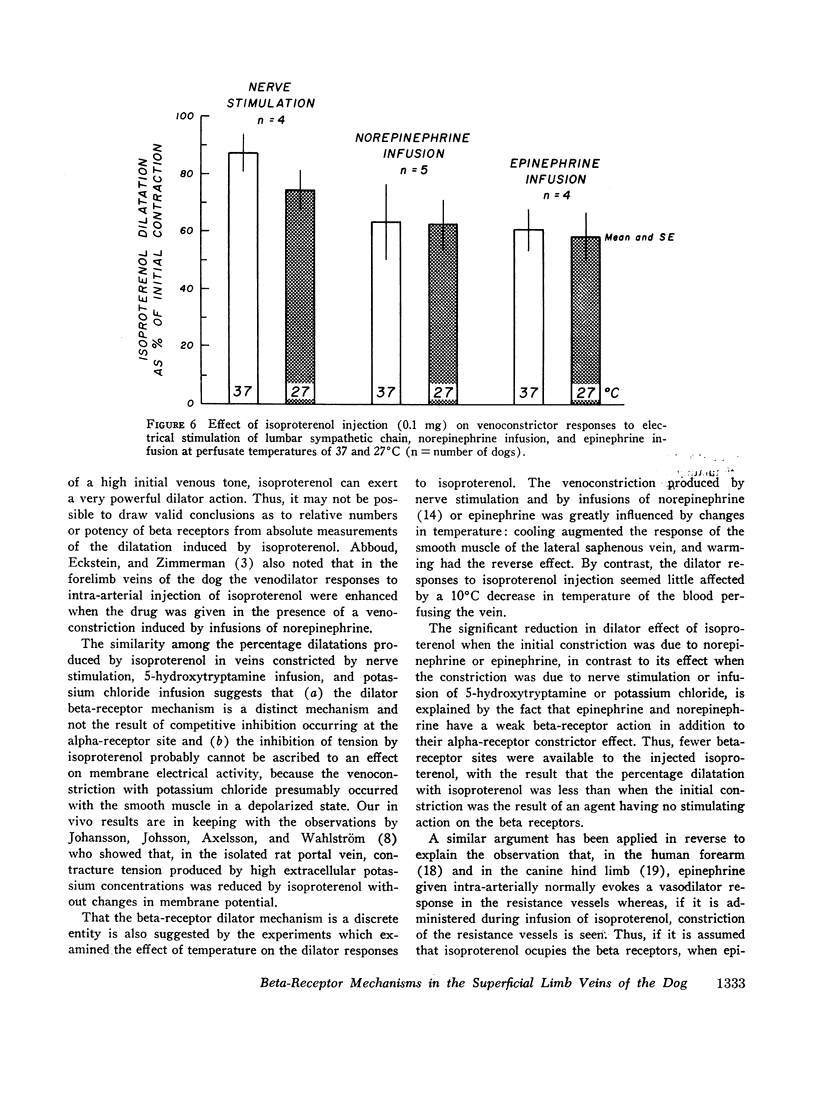
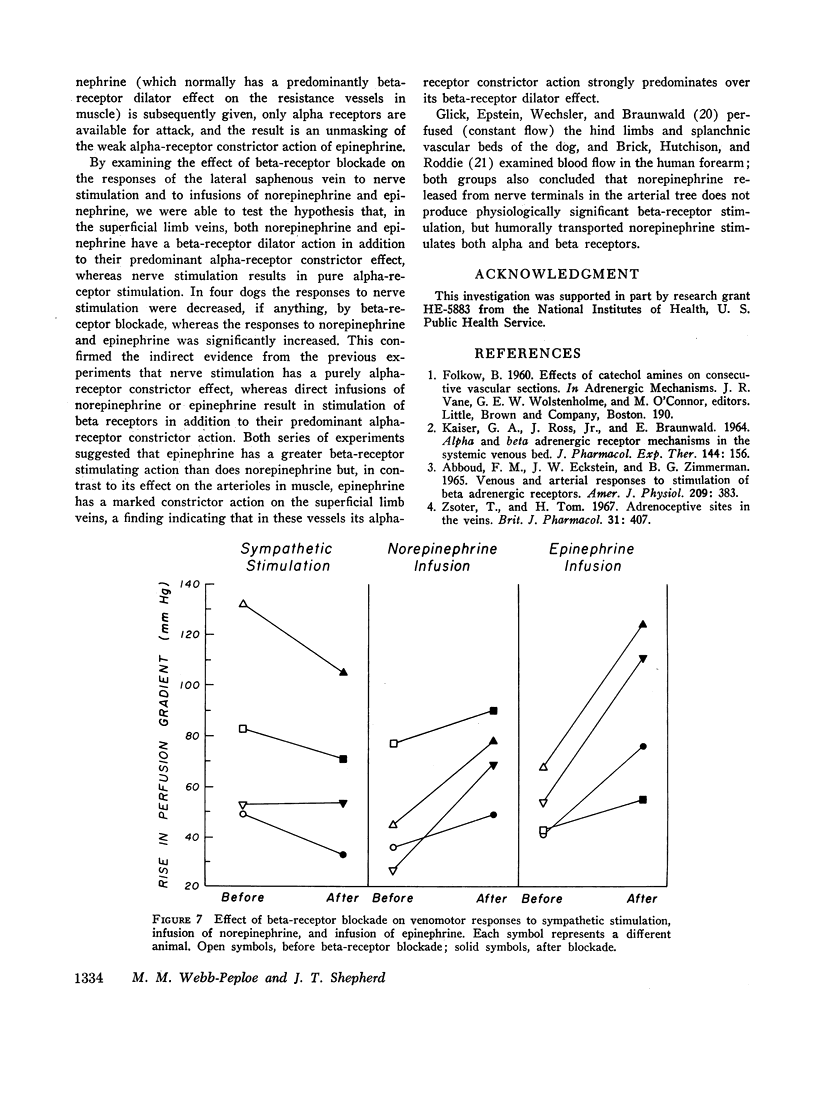
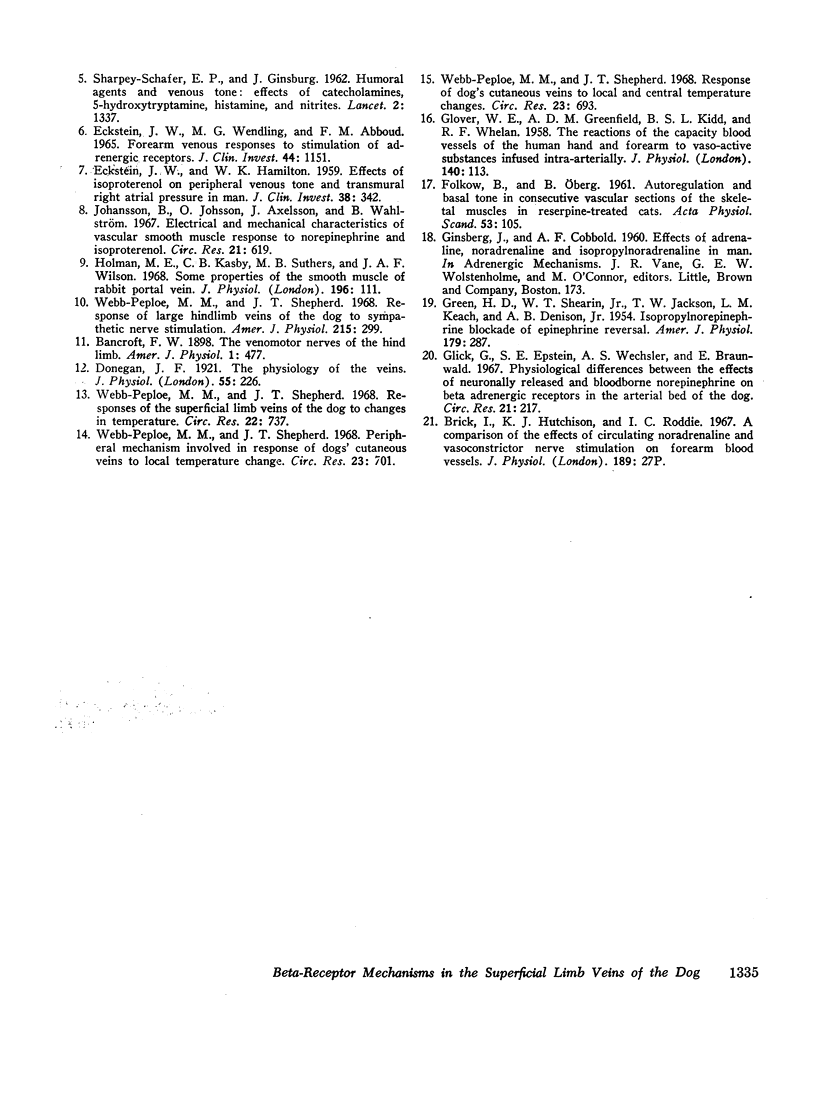
Images in this article
Selected References
These references are in PubMed. This may not be the complete list of references from this article.
- ABOUD F. M., ECKSTEIN J. W., ZIMMERMAN B. G. VENOUS AND ARTERIAL RESPONSES TO STIMULATION OF BETA ADRENERGIC RECEPTORS. Am J Physiol. 1965 Aug;209:383–389. doi: 10.1152/ajplegacy.1965.209.2.383. [DOI] [PubMed] [Google Scholar]
- Donegan J. F. The physiology of the veins. J Physiol. 1921 Aug 3;55(3-4):226–245. doi: 10.1113/jphysiol.1921.sp001964. [DOI] [PMC free article] [PubMed] [Google Scholar]
- ECKSTEIN J. W., HAMILTON W. K. Effects of isoproterenol on peripheral venous tone and transmural right atrial pressure in man. J Clin Invest. 1959 Feb;38(2):342–346. doi: 10.1172/JCI103807. [DOI] [PMC free article] [PubMed] [Google Scholar]
- ECKSTEIN J. W., WENDLING M. G., ABBOUD F. M. FOREARM VENOUS RESPONSES TO STIMULATION OF ADRENERGIC RECEPTORS. J Clin Invest. 1965 Jul;44:1151–1159. doi: 10.1172/JCI105222. [DOI] [PMC free article] [PubMed] [Google Scholar]
- FOLKOW B., OBERG B. Autoregulation and basal tone in consecutive vascular sections of the skeletal muscles in reserpine-treated cats. Acta Physiol Scand. 1961 Oct;53:105–113. doi: 10.1111/j.1748-1716.1961.tb02268.x. [DOI] [PubMed] [Google Scholar]
- GLOVER W. E., GREENFIELD A. D., KIDD B. S., WHELAN R. F. The reactions of the capacity blood vessels of the human hand and forearm to vaso-active substances infused intra-arterially. J Physiol. 1958 Jan 23;140(1):113–121. doi: 10.1113/jphysiol.1958.sp005920. [DOI] [PMC free article] [PubMed] [Google Scholar]
- GREEN H. D., SHEARIN W. T., Jr, JACKSON T. W., KEACH L. M., DENISON A. B., Jr Isopropylnorepinephrine blockade of epinephrine reversal. Am J Physiol. 1954 Nov;179(2):287–294. doi: 10.1152/ajplegacy.1954.179.2.287. [DOI] [PubMed] [Google Scholar]
- Glick G., Epstein S. E., Wechsler A. S., Braunwald E. Physiological differences between the effects of neuronally released and bloodborne norepinephrine on beta adrenergic receptors in the arterial bed of the dog. Circ Res. 1967 Aug;21(2):217–227. doi: 10.1161/01.res.21.2.217. [DOI] [PubMed] [Google Scholar]
- Holman M. E., Kasby C. B., Suthers M. B., Wilson J. A. Some properties of the smooth muscle of rabbit portal vein. J Physiol. 1968 May;196(1):111–132. doi: 10.1113/jphysiol.1968.sp008498. [DOI] [PMC free article] [PubMed] [Google Scholar]
- Johansson B., Johsson O., Axelsson J., Wahlström B. Electrical and mechanical characteristics of vascular smooth muscle response to norepinephrine and isoproterenol. Circ Res. 1967 Nov;21(5):619–633. doi: 10.1161/01.res.21.5.619. [DOI] [PubMed] [Google Scholar]
- KAISER G. A., ROSS J., Jr, BRAUNWALD E. ALPHA AND BETA ADRENERGIC RECEPTOR MECHANISMS IN THE SYSTEMIC VENOUS BED. J Pharmacol Exp Ther. 1964 May;144:156–162. [PubMed] [Google Scholar]
- SHARPEY-SCHAFER E. P., GINSBURG J. Humoral agents and venous tone. Effects of catecholamines, 5-hydroxytryptamine, histamine, and nitritex. Lancet. 1962 Dec 29;2(7270):1337–1340. doi: 10.1016/s0140-6736(62)91018-8. [DOI] [PubMed] [Google Scholar]
- Webb-Peploe M. M., Shepherd J. T. Response of dogs' cutaneous veins to local and central temperature changes. Circ Res. 1968 Dec;23(6):693–699. doi: 10.1161/01.res.23.6.693. [DOI] [PubMed] [Google Scholar]
- Webb-Peploe M. M., Shepherd J. T. Response of large hindlimb veins of the dog to sympathetic nerve stimulation. Am J Physiol. 1968 Aug;215(2):299–307. doi: 10.1152/ajplegacy.1968.215.2.299. [DOI] [PubMed] [Google Scholar]
- Zsoter T., Tom H. Adrenoceptive sites in the veins. Br J Pharmacol Chemother. 1967 Nov;31(3):407–419. doi: 10.1111/j.1476-5381.1967.tb00408.x. [DOI] [PMC free article] [PubMed] [Google Scholar]



